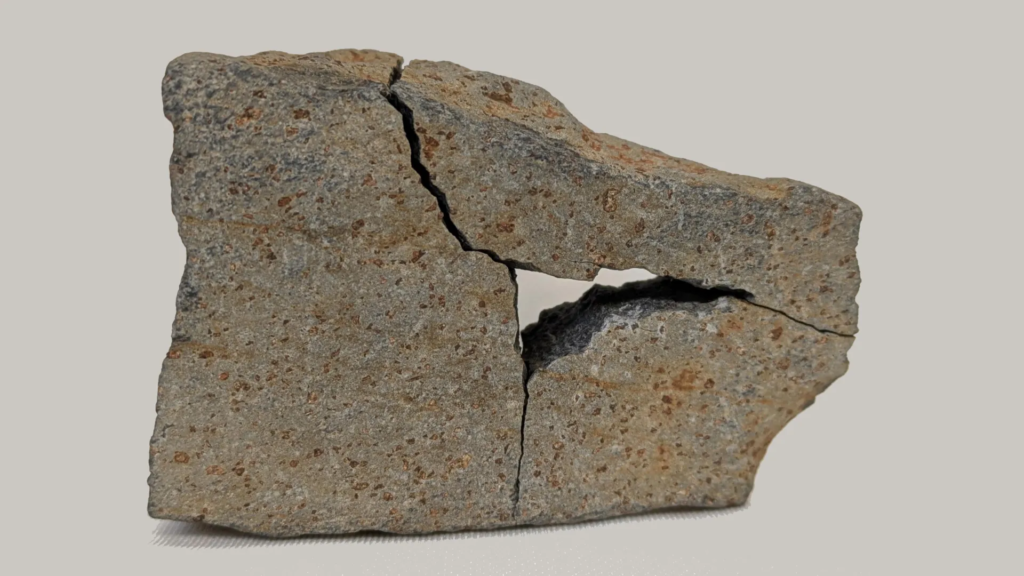The hunt for life on Mars just got a lot more interesting. NASA’s Perseverance rover collected a rock sample, now known as Sapphire Canyon, that has a peculiar leopard-spotted appearance. This curious red rock, with its white spots and black borders, has scientists excited because these markings could be a hint of something biological. On Earth, similar spots are sometimes linked to microorganisms, which has fueled speculation about what this rock could contain.

The Science Behind the Spots
The potential for biological life is the most exciting possibility, but scientists are also considering other explanations. The spots on the rock may contain a mix of iron, phosphate, and organic matter, which could have been an energy source for ancient microbes. However, the rock also contains olivine crystals, which form in hot lava—a condition that would have been too extreme for life to exist. This duality is what makes the discovery so intriguing. Scientists won’t know for sure until they can get the rock back to a lab on Earth for a full analysis. This won’t happen until the early 2030s, as part of the Mars Sample Return mission.
A New Tool for a New Discovery
To prepare for the arrival of the Martian samples, scientists are developing and testing new techniques. One powerful method is called optical photothermal infrared spectroscopy (O-PTIR). This technology uses two lasers to create a unique chemical fingerprint of a material. One laser heats the material, causing tiny vibrations, and a second laser measures those changes. This allows researchers to quickly and precisely identify a material’s chemical makeup.
An author of the research, Nicholas Heinz, found a similar spotted rock by chance while hiking in Arizona. He brought it back to the lab to test the O-PTIR technique. The test was a success, proving that O-PTIR is extremely effective at distinguishing between the main rock material and the inclusions within it. It’s also a rapid technique, providing a spectrum in minutes, which will allow scientists to quickly identify regions of interest for more detailed analysis. The hope is that this capability will be a key part of analyzing any future samples brought back from Mars.
Beyond Mars: A Universal Tool

The O-PTIR technology is not just for Mars. The same capabilities at NASA’s Jet Propulsion Laboratory were used to confirm the cleanliness of the Europa Clipper spacecraft before its launch. The team is now working with NASA’s Mars science team to test algal microfossils, which are often used as Mars analogs for rover missions. This work shows how a single scientific breakthrough can have wide-ranging applications, from preparing for a mission to one of Jupiter’s moons to analyzing samples from a spotted rock on Mars. The future of planetary exploration is here, and the tools being developed today are paving the way for the discoveries of tomorrow.
References
ScienceDaily– “Strange spotted rock on Mars could reveal signs of ancient life” August 15, 2025
Similar Posts

Stranger